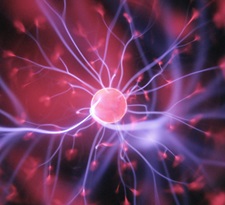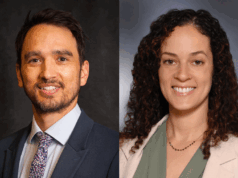 Panaxium Research and CoMotion at the University of Washington (Seattle, USA) have jointly announced that Panaxium has secured an exclusive option agreement to license intellectual property (IP) concerning methods for therapy intended to help stroke patients recover lost functions due to brain damage.
Panaxium Research and CoMotion at the University of Washington (Seattle, USA) have jointly announced that Panaxium has secured an exclusive option agreement to license intellectual property (IP) concerning methods for therapy intended to help stroke patients recover lost functions due to brain damage.
Panaxium is developing personalised, responsive neurostimulation therapies that will use ‘dynamic’ stimulation protocols designed to respond in real time to each patient’s individual brain anatomy, specific injury, and recovery process, according to a press release.
“This agreement with CoMotion enables us to integrate cutting-edge research into our own platform to address one of the most urgent unmet needs in neurorehabilitation,” said Panaxium chief executive officer (CEO) Brad Schmidt. “By using the brain’s own signals to guide therapy, we believe we can help more stroke patients recover more function—even in cases where the patient’s recovery has long since plateaued, and even for many years post-injury. It is our aim to give new hope to millions who have had no effective therapies available to them.”
The agreement between Panaxium and CoMotion covers IP co-owned by the University of Washington and Seattle Children’s Hospital, including ‘systems and methods for promoting neuroplasticity in a brain’. This technology was co-developed by the multidisciplinary team of Rajesh Rao, Jeffrey Ojemann, Eberhard Fetz, Chet Moritz and Jeffrey Herron at the University of Washington School of Medicine and Seattle Children’s.
“The method we have patented introduces a novel approach to neuromodulation that uses real-time brain signals to guide stimulation for stroke recovery,” stated Herron (University of Washington, Seattle, USA), who is also an advisor to Panaxium. “The core innovation lies in the use of dynamic, feedback-driven stimulation, where stimulation is delivered based upon signals from the patient’s brain to enhance neuroplasticity in a directed manner to promote stroke recovery. By tailoring therapy to each patient’s unique neural activity and their unique stroke, this method holds promise for improving outcomes across a broader range of stroke injuries and severities.”
Panaxium says it plans to integrate this technology along with its own proprietary methods, which includes artificial intelligence (AI)-enabled targeting, and the use of high-resolution tailoring of stimulation within the protocols. The company’s goal is to develop a next-generation precision stroke therapy that adapts to the brain’s natural recovery processes—and “pushes beyond the limits of conventional rehabilitation”.
The licensed technology is currently being evaluated in a first-in-human clinical trial under a US Food and Drug Administration (FDA) investigational device exemption (IDE). The study, ‘Motor recovery through plasticity-inducing cortical stimulation’, is led by Ojemann along with fellow principal investigator Steve Cramer (University of California Los Angeles [UCLA], Los Angeles, USA)—an expert in stroke recovery who is also an advisor to Panaxium. The trial recently achieved a major milestone with its first implantation procedure, marking the beginning of patient enrolment and real-world testing of this therapeutic approach.
“Many of us practising in this field have agonised over there being very few options for patients who have survived a stroke,” said Douglas James Cook (Queen’s University, Kingston, Canada), chief medical officer of Panaxium. “Most of the time, we must tell patients and their families this is the best it will get, and they bravely move forward with their lives, adjusting to their new reality. But, now, we have an opportunity to change the way we think about stroke and the way we treat each unique case, by combining neural imaging and this intelligent stimulation.”
The recent release highlights the fact that this agreement with CoMotion was structured through its startup-friendly option framework, granting Panaxium exclusive development rights and a “clear path” to full commercialisation pending milestone achievements.
“UW [University of Washington] is committed to ensuring our research results in real-world impact,” said Judy Bridges, innovation manager at CoMotion. “We’re excited to see how translating this innovation may change the lives of millions affected by stroke.”
Earlier this year, the University of Washington School of Medicine also announced its involvement in a US FDA-approved clinical trial of German company CorTec’s Brain Interchange technology—a proprietary, closed-loop brain-computer interface (BCI) system intended to deliver direct cortical electrical stimulation to enhance upper-limb motor recovery in stroke patients.
The first human implantation of this system took place at Harborview Medical Center (Seattle, USA) in late July, marking “a pivotal advance in translating laboratory research into real-world clinical applications”. The trial—also led by Ojemann and Cramer as principal investigators—will gather initial data on the system’s safety and ability to improve post-stroke motor rehabilitation.
“We’re thrilled to share that the implantation procedure was a success and, most importantly, the patient is in good condition and recovering well from the surgery,” Ojemann commented. “We’re incredibly grateful for this initial outcome in our first study participant. Both the therapeutic strategy and the technology we are using are entirely novel. While we proceed with careful optimism, the potential benefits for patients are promising.”










